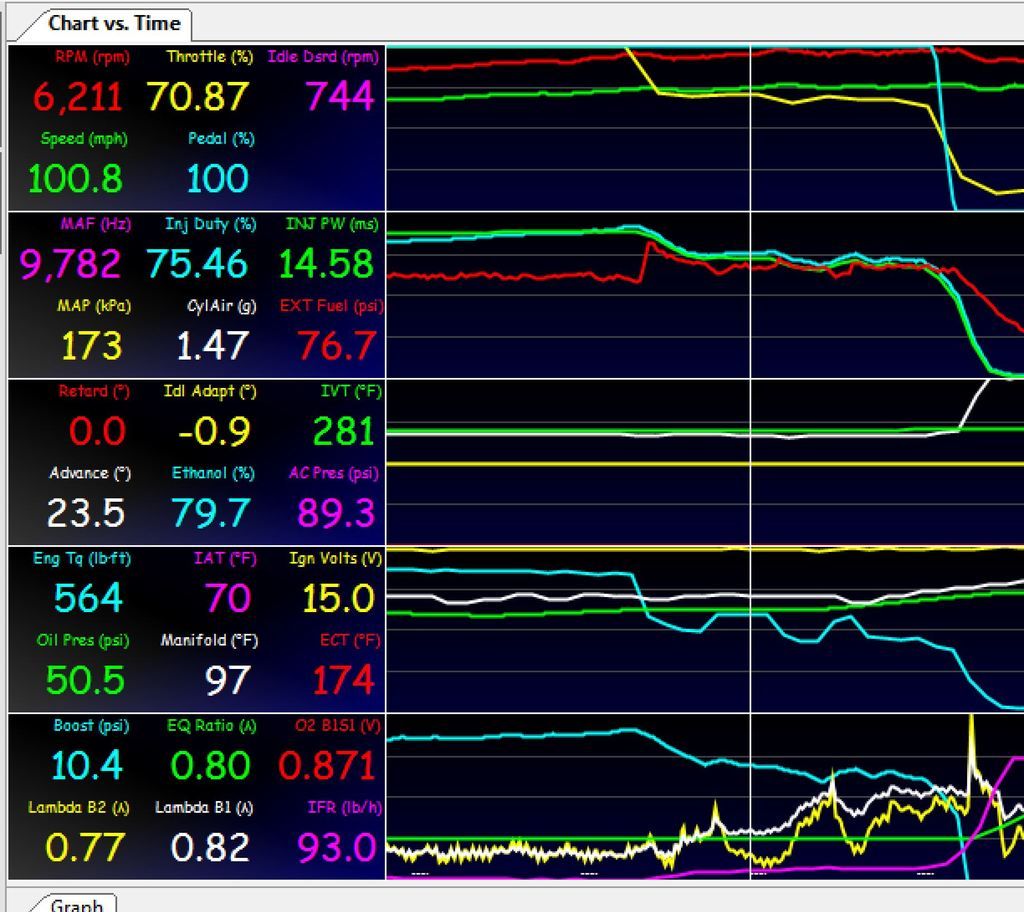Hi guys, I've got a question!
I haven't changed my fuel cutoff/rev limiter settings in my LSA Sky for quite awhile but I recently have been thinking about experimenting again. The stock CTS-V LSA file uses the throttle, I turned that off long ago because it seemed to make it dump too much power and be too slow to regain rpm/power after it hit the limiter. So for the last couple years I've been running it with only ignition timing and fuel cut, more like the LS9's do. But the LS9's don't use ignition timing control, which I kinda like since it's fast and more "controllable".
To clarify, this is only for situations like when doing silly stuff like donuts or burnouts. lol. Obviously I don't like to sit on the rev limiter, but there are times when things are happening too quickly to worry enough about rpm control. So like when drifting a turn in second gear, I want it to be able to run right up to 6k or so, but not dump power and rpm so drastically that it throws the car back and forth when the wheel speeds change. (Naughty drivers problems. haha) These settings I've been using have been working ok, but I want them better! We all know, it's ALWAYS a never ending quest to make things better!
Anyway, can you guys look at what I've been running and maybe we can get a discussion going about what everyone is doing for rev limiting? I think it would be cool to have it setup so it basically sits at an even 6k or whatever you want it to be at, without the up and down power and rpm's of a "normal" rev limiter setup. I've also made my main ignition timing dump drastically at around 6300 on up so if it does go towards 6400 or above, it won't be able to make enough power to rev any higher. I'm thinking I'd almost like it to only be controlled by dumping the ignition timing so it would be easier to keep it at a certain rpm in those situations, but that's not how any stock limiters I've seen are setup. BTW, I actually wanted to look at an LS9 file with PTM, but I only have LS9 files up to '11 and I think that started in '12?
Thanks guys!
Here's the settings I've been using. It's been years since I came up with these so I don't even remember my thinking on any of the numbers I put in! It's been working pretty well to control the rpm's, I just think it can work better with some more knowledge from you guys and some re-experimenting.
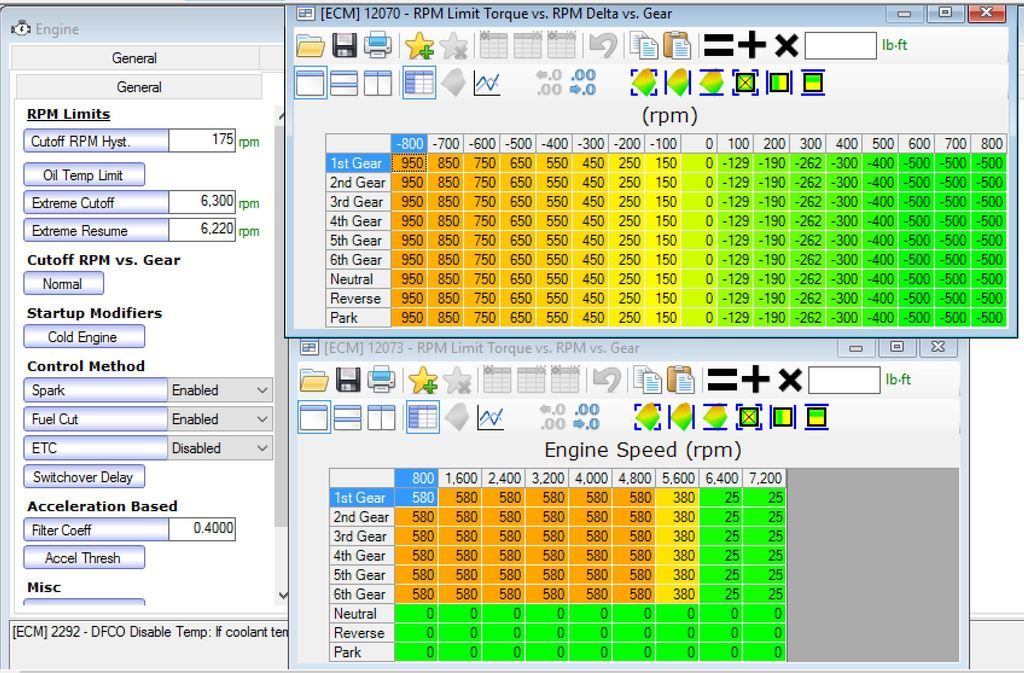




 Reply With Quote
Reply With Quote

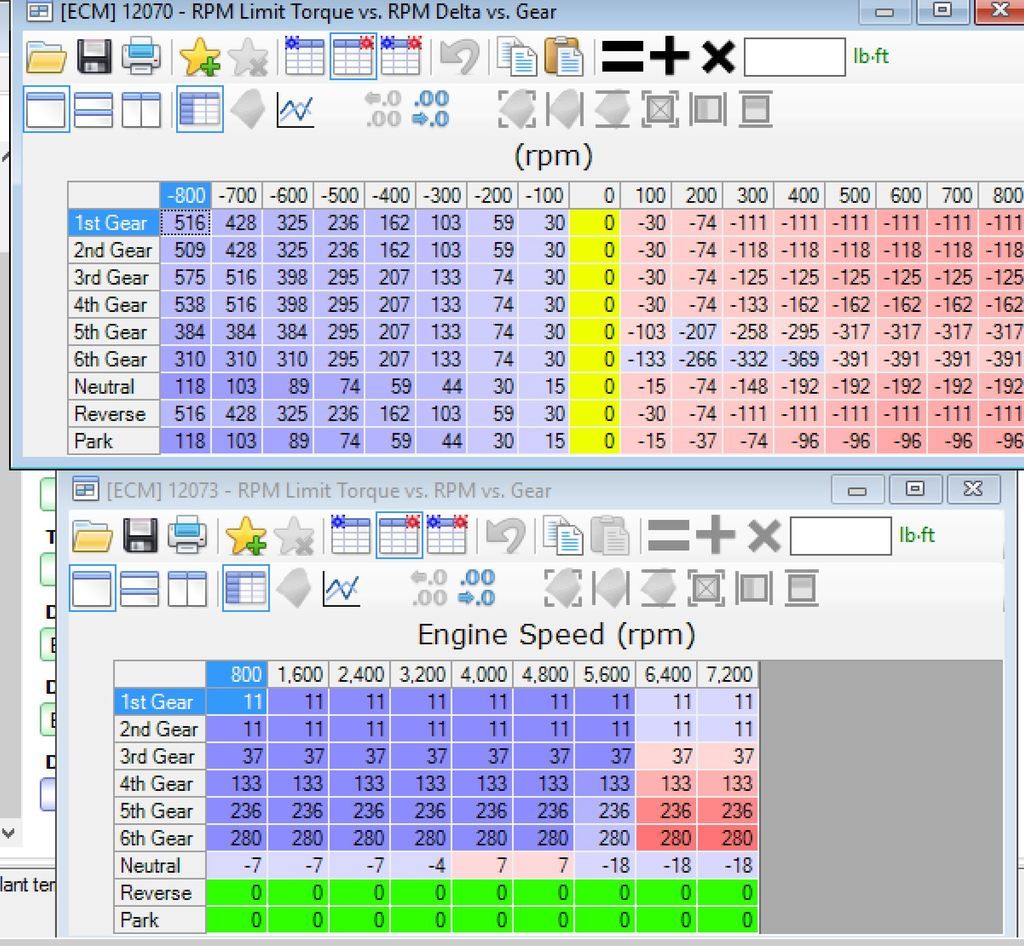
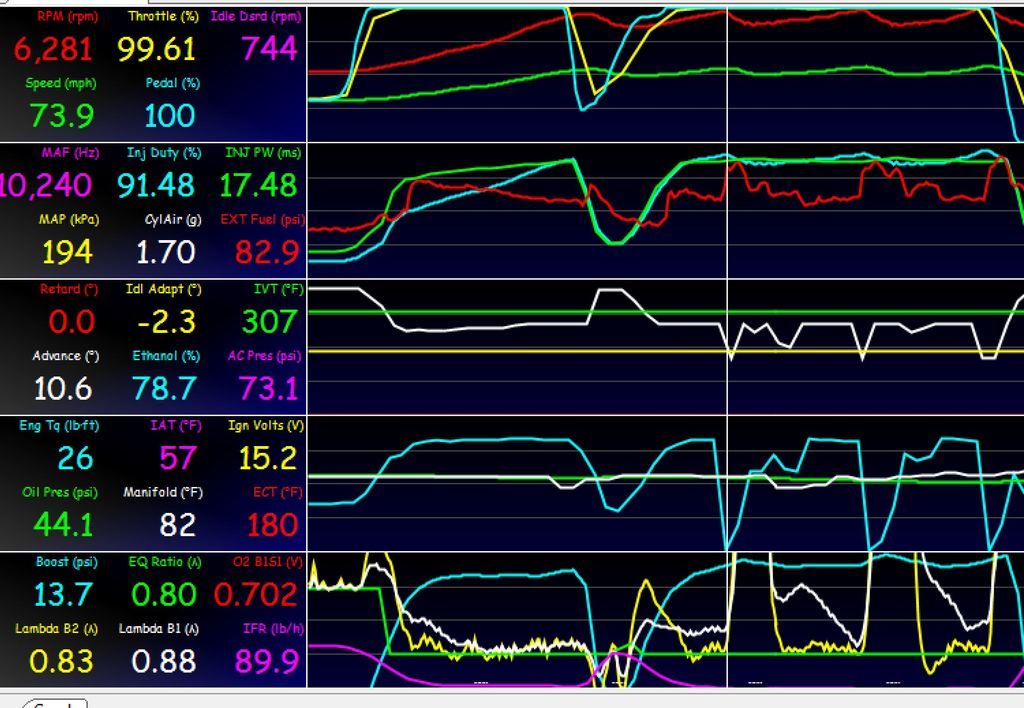

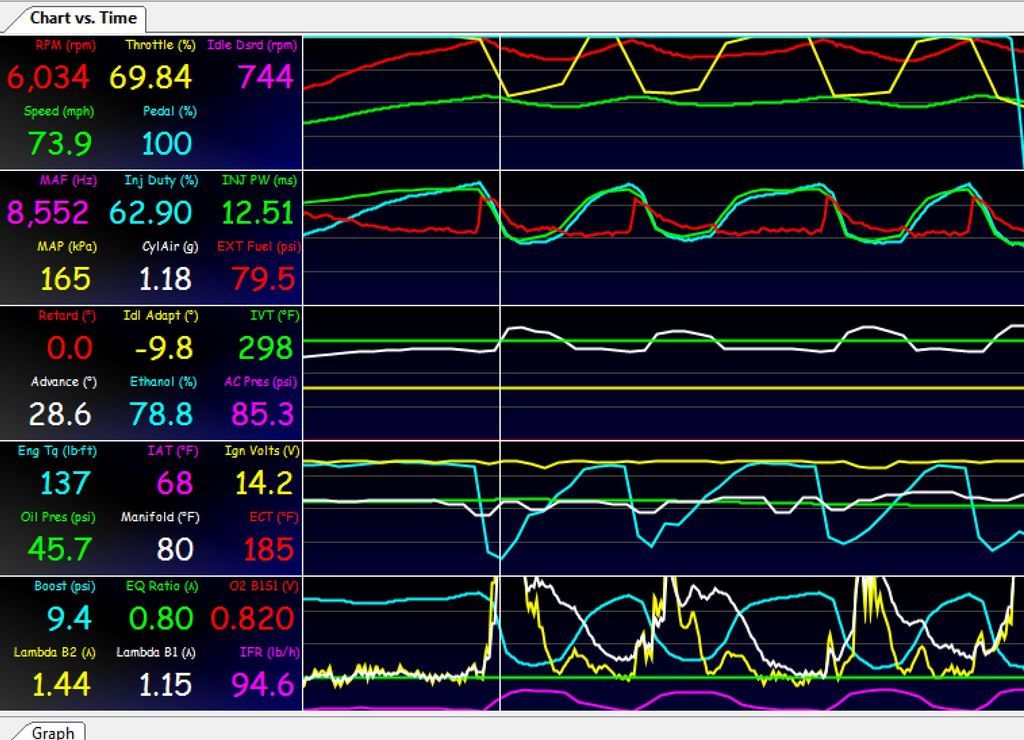
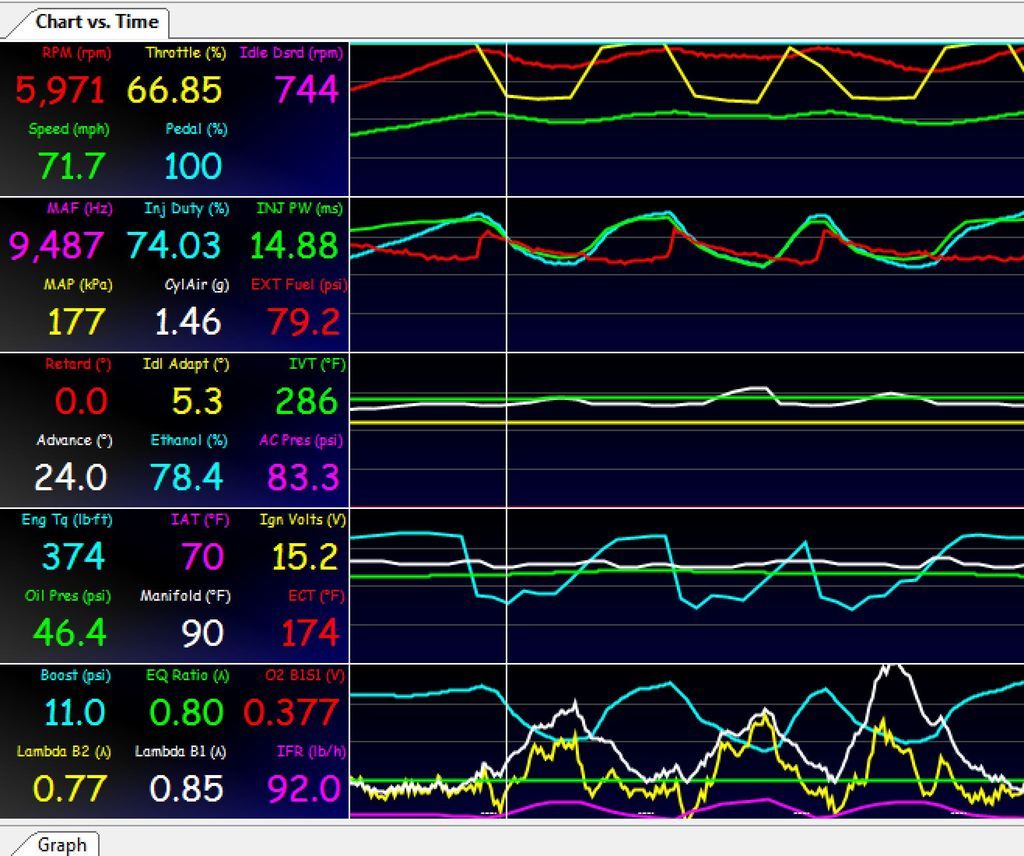
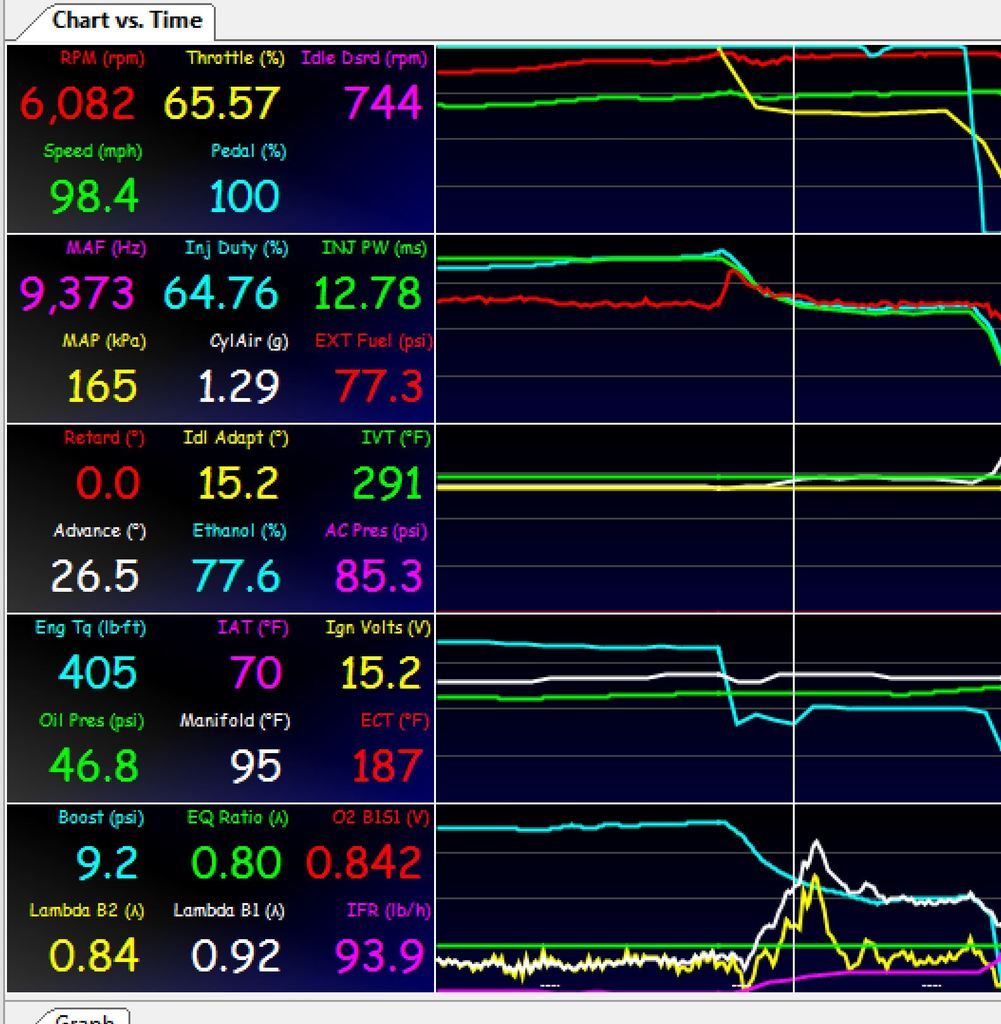
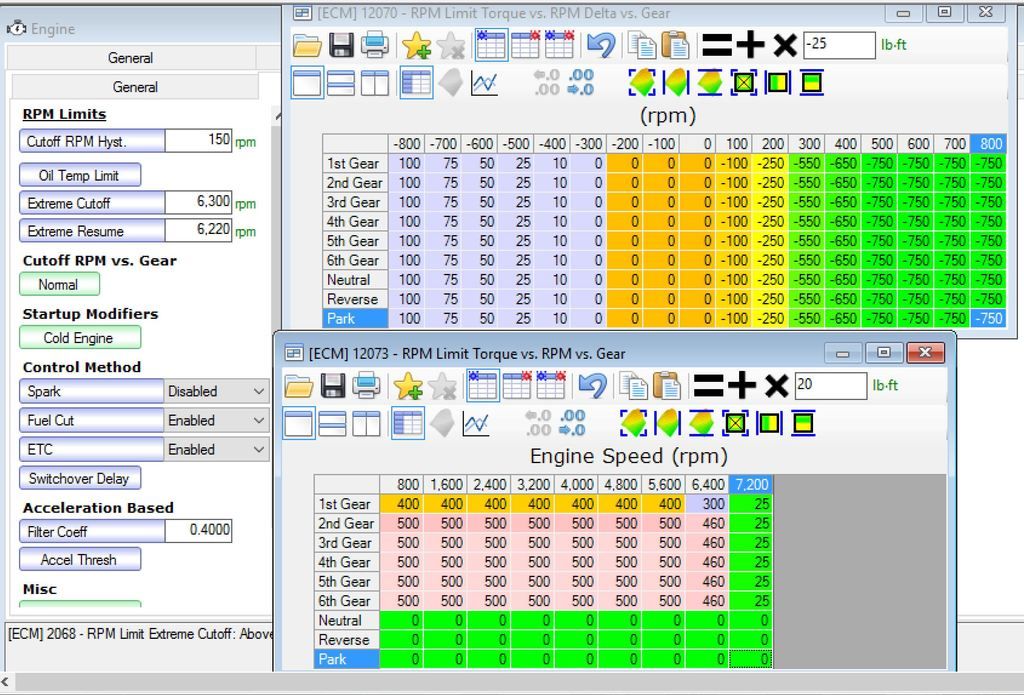

 Sooo, I'm just sitting here taking notes...
Sooo, I'm just sitting here taking notes...  Never the less - I never caught it at the time and wasn't paying attention - over revved and kissed some valves... I tend not to mess with actual torque settings for rev limiters much anymore...
Never the less - I never caught it at the time and wasn't paying attention - over revved and kissed some valves... I tend not to mess with actual torque settings for rev limiters much anymore...
